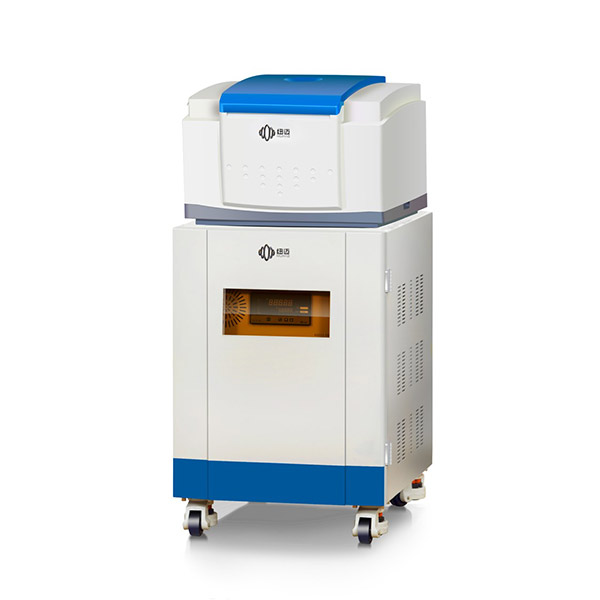Time Domain Nuclear magnetic resonance (NMR) may be a powerful analytical tool employed in analysis to get elaborate info regarding the structure, dynamics, reaction state, and chemical setting of molecules and in medication to supply pictures of soppy tissue.
There are various distinct nuclear magnetic resonance methodologies all supported the principle that exposure to a magnetic field, causes nuclei to be elevated to the next energy level, and this energy transfer is reversed on removal of the magnetic field. the various techniques are broadly speaking classified as spectroscopic analysis, imaging or relaxometry.
The high value and ponderous nature of instrumentation for NMR spectroscopy and imaging stems from the need for high-field superconducting magnets to attain chemical shift resolution. NMR relaxometry (also referred to as time domain NMR) is performed while not spectroscopy or imaging, and then can be conducted victimization smaller, less costly low-field permanent magnets. though this system sacrifices the ability of atomic or special resolution, it is the benefits of being transportable associate degreed cost-effective. For this reason, despite being less powerful time domain nuclear magnetic resonance is gaining in popularity. It permits NMR to be employed in settings on the far side the specialized NMR laboratory or imaging center and is being utilized in an ever-increasing vary of applications.
Time domain NMR(TD-NMR)
Time domain NMR measures the time needed for nuclei to come to equilibrium when excitation. it is widely known as a reliable, convenient, speedy analytical methodology that shows high reproducibility while not the requirement for sample preparation and is non-destructive.
A form of benchtop, compact time domain nuclear magnetic resonance spectrometers are developed which will achieve 1H resonance frequencies of roughly 5–60 megahertz (that is around one-to-two orders of magnitude not up to the traditional NMR spectrometers).
In addition to being more cost-effective and portable, time domain NMR spectrometers accommodate a far wider vary of sample type, together with semi-solid or liquid crystalline samples and heterogeneous samples. Consequently, there are many analytical tasks that can be adequately addressed without the need for high-end spectroscopic analysis or imaging.
Having been over-shadowed for several years by tremendous advances in high-field spectroscopy and imaging, time domain nuclear magnetic resonance is creating a come-back. The movableness and affordability of this easy methodology afford a mess of exciting new opportunities for NMR. Current applications of compact time domain NMR embody quality testing within the organic compound and food industries and diagnostic blood tests, e.g., for internal secretion resistance.
Evaluating Nano fluidity with NMR
One of the various new avenues of analysis within which time domain NMR has been explored is in the determination of nano fluidity in biological systems.
The liquidity of lipid-rich assemblies, such liquid body substance lipoproteins and cell membranes is a crucial consider deciding their physical properties and biological functions1. It will vary consistent with organic compound chain composition and in response to temperature changes. The extent of liquidity of the hydrocarbon chains inside biological membranes is believed to be a key determinant of cell surface receptor function2. Similarly, it can dictate the speed at that sterol within the style of low-density lipoproteins is cleared from the blood3.
Time domain nuclear magnetic resonance is truly higher suited to finding out lipids in cell membranes that NMR spectroscopic analysis since it does not place confidence in chemical shift resolution or slender NMR resonances. Furthermore, the relief time constants given by time domain NMR provide valuable information. organic compound chain fluidity has conjointly been assessed victimizations visible radiation negatron spin resonance; however, this is often related to considerations that the probe might interfere with near structures.
Using a time domain benchtop nuclear magnetic resonance relaxometer with a permanent magnet, researchers studied a series of single-phase carboxylic acid oils4. They were ready to correlate 1H spin−spin time constant constants (T2) obtained by time domain NMR with measures of liquidity obtained employing a viscometer. The technique with success resolved 2 to four T2 parts in biologically relevant fatty acids. T2 values for every domain of the organic compound chain exhibited positive linear correlations with fluidity.
The results from this study illustrate that time domain nuclear magnetic resonance victimization benchtop instrumentation achieves vital physical phenomenon and is sensitive to variations in organic compound chain structure and composition. there is consequently potential for time domain NMR to be wont to monitor Nano fluidity in alternative biological systems.

 NIUMAG
NIUMAG